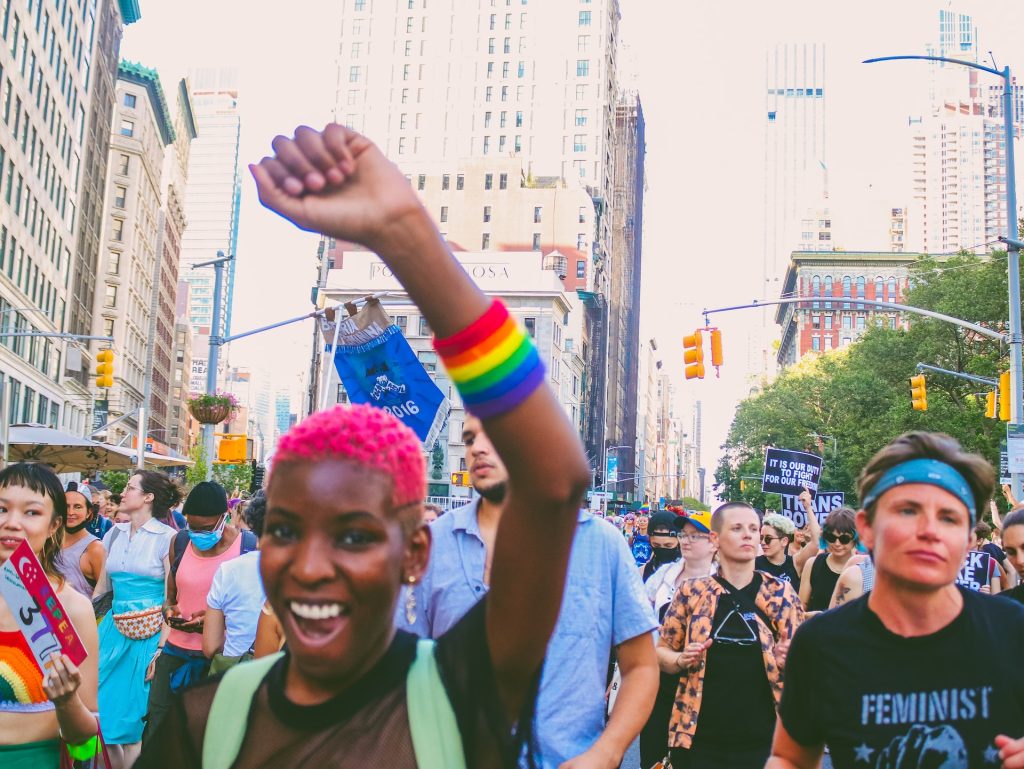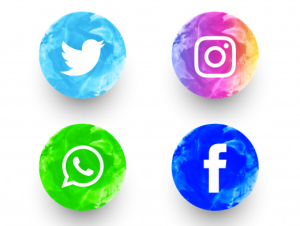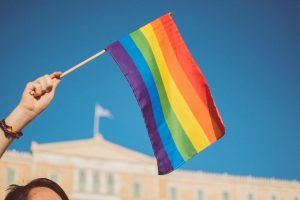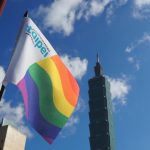5 Obstacles Facing The LGBTQ+ Neighborhood

The defend LGBTQ+ civil liberties has actually come a long way, however the fight for approval is much from over. Specialists collaborating with clients that are participants of the LGBTQ+ area commonly see elevated rates of mental wellness obstacles in this population, consisting of stress and anxiety, depression, injury, disordered eating, and even suicidal ideation (Young & Fisher-Borne, 2018). Much of these mental health battles are partly or completely the item of overbearing techniques and frameworks which continue to be unchallenged in our society. As a psychological health and wellness expert, becoming aware of these hazardous structures and exactly how they impact your customers is necessary to giving affirmative treatment. Right here are several of one of the most famous challenges encountering the LGBTQ+ community today.
Healthcare Access
A concern dealing with the LGBTQ+ area is how standard health care services are often frustratingly unreachable. As previously discussed, LGBTQ+ people go to a much higher danger of anxiousness and clinical depression and likewise often tend to have a higher rate of substance abuse, which can create serious physical health problems otherwise properly treated (Gnan et al., 2019). It is likewise worth noting that lack of gender- and sexuality-affirming care is often a barrier to LGBTQ+ people seeking therapy for psychological health and wellness or chemical abuse problems. This is unsurprising, offered the health care system’s historical ignorance and also abuse when it comes to marginalized neighborhoods (Dentato, 2017). On top of these factors, also when medical care is available and non-discriminatory, LGBTQ+ individuals are two times as likely to be uninsured as non-LGBTQ+ individuals (Knoepp et al., 2022). And even when they are guaranteed, LGBTQ+ clients face architectural gatekeeping that prevents them from obtaining suitable treatment (Shapiro & Powell, 2017). Procedures like fertility therapy and gender-affirming care are particularly hard to accessibility.
The irritating fact is that many participants of the neighborhood simply have trouble discovering physician they really feel comfortable with– that do not exoticize or infantilize them (Shapiro & Powell, 2017). Just making the effort to pay attention to LGBTQ+ patients, relying on that they know what they are experiencing and what they need, appears like a reduced bar for any doctor. Sadly, it continues to be a bar that doctor often fall short to get to (Burton, 2015). The history of contemporary healthcare contains gatekeeping and the pathologizing of LGBTQ+ existence. The esteemed psychoanalyst and psychoanalyst Jack Drescher has set out a comprehensive timeline of how “homosexuality” has actually developed in our social consciousness for many years (2016 ). In the first Diagnostic and Statistical Handbook (DSM) released by the American Psychological Organization (APA) back in 1952, mental health experts were advised to identify homosexual behavior as “Sociopathic Personality Disturbance” (Drescher, 2016). This was transformed to “Sexual Deviation” by 1968 in the DSM-II, and it was simply in 1973 that the American Psychological Organization ultimately voted to get rid of “Homosexuality” as a disorder and replaced with “Sexual preference Disruption.” This was not the end, nonetheless! The DSM-IV, which came out in the year 2000, still consisted of the diagnosis of “Sexual Problem NOS” which was frequently utilized to pathologize LGBTQ+ folk as “hypersexual” and “deviant stars.” Furthermore, the ICD-10 (Global Classification of Conditions), which is preserved by the Globe Wellness Company (WHO), really did not remove homosexuality from its ICD category up until 1992. Today, it still lugs with it the construct of ego-dystonic sexual preference (Burton, 2015).
It needs to be no surprise that LGBTQ+ clients nurture distressed fears when it involves the modern healthcare system. Most of us would not really feel eager to seek treatment from experts trained to pathologize our identifications or disbelieve our lived-experience. These failures are not ancient history. They are dealing with us today, and permit those most seeking our assistance to fall through the cracks of our health care system.
Employment and Housing Discrimination
There are couple of points more important to survival than having a roofing over your head and food on the table. Getting these key elements confirm almost impossible when a person is locked out of real estate markets or refuted employment. A number of states in the US have actually passed laws securing LGBTQ+ locals from these kinds of inequitable practices, however much a lot of have actually failed to enact regulation. Even states that have taken steps to protect these minorities consistently fall short to appropriately implement these protections when essential (Smith, 2020). There are far a lot of tales of lasting staff members lastly rounding up the guts ahead out of the closet only to encounter hostility in their work environment.
A similar circumstance plays out with tenants and proprietors all throughout the nation. LGBTQ+ tenants might be discarded by a queerphobic property owner with little legal support or substantial choice (Permenter, 2012). It is no wonder that a striking 22% of LGBTQ+ individuals live in destitution, and 17% have experienced being homeless, statistics made extra alarming when changed for racial discrimination (Wilson et al., 2020). Federal legislation like The Equality Act has long been stalled as legislators squabble over problems like recognition of greater than two sex identities (Zalot, 2019). One more generally debated problem is the role of spiritual organizations in sustaining LGBTQ+ area members, and whether these companies have a right to refuse to serve them (Zalot, 2019). The discussion these discussions produce proactively lessens and marginalizes the lived experiences of oppressed communities by turning them into a bipartisan issue instead of a civils rights issue.
These structures of inequality create and receive an environment where being a member of the LGBTQ+ area is a danger to a queer person’s own health and wellbeing as well as the people they enjoy. Recent experiences with major global occasions like a pandemic or an economic crisis, have actually starkly shown how marginalized neighborhoods are the first to be affected and often the last to recuperate (Goldsmith et al., 2021). This destabilization can make basic survival seem like a tenuous harmonizing act. Whether by a major occasion or individual circumstances of discrimination, the danger of hardship and homelessness is constant for LGBTQ+ individuals, and can come to be grim reality at nearly any minute.
Violence
According to the Los Angeles LGBT Center’s Finding Security (2020) study examining gendered physical violence, LGBTQ+ populations experience a greater price of violence than their cisgender, heterosexual (” cishet”) peers. This can be observed in several locations of LGBTQ+ life. For one, the Searching for Safety study disclosed that 1 in 5 hate criminal offenses in the United States are because of sexual orientation, while another 2% of those hate crimes are due to gender identity. At the junctions of gender-based physical violence and race, trans females of color deal with a few of the highest rates of physical violence across all demographics, and yearly sees a constant rise in murder prices for TGNC people (Dinno, 2017; Gerstenfeld, 2019; Holt, 2020). Additionally, LGBTQ+ children and young people continue to be substantially more susceptible to harassing and harassment in institution than their cishet peers (Earnshaw et al., 2020). The 2020 Finding Safety record discovered that roughly 80% of the LGBTQ+ survivors who involve the quit Violence Program at the Los Angeles LGBT Center have experienced intimate partner physical violence (IPV), and it is approximated that 1 in 5 LGBTQ+ connections has occurrences of IPV general (Holt, 2020). These data demonstrate just how violence and the risk of violence confront LGBTQ+ individuals at almost every level of society, from public to exclusive.
Complicating this issue further is the reality that there is an established suspect of the criminal justice system in LGBTQ+ communities– one that is deeply warranted by a history of persecution by law enforcement. As an example, the party of Pride annually is a memorial to exactly how LGBTQ+ folks fought back in the face of authorities injustice and physical violence during the Stonewall Troubles (Stein, 2019). Distrust of the justice system integrated with a lowered access to lawful or social resources makes determining and confronting the danger of violence a continuous struggle. This is one more reason that it is essential for specialists and various other healthcare workers to remain informed regarding how to offer security and sources to the LGBTQ+ neighborhood. There is frequently no place else for queer individuals to transform, as a lot of social safety nets have actually shown not able to stop harm– if not proactively inflicting it themselves.
Coming to be Moms and dads
It comes as no surprise that though fostering by same-sex couples is presently lawful in all 50 states, LGBTQ+ people that want to become parents still deal with heavy discrimination from lots of adoption and social service agencies (Farr et al., 2020). For people that make a decision to go after artificial insemination or surrogacy, much of these procedures are remarkably expensive or are not covered by insurance policy, securing numerous LGBTQ+ folks out of the healthcare systems that facilitate family-planning (Spoto, 2021). In some states, just the individual that delivered can authorize a kid’s birth certificate, implying that any non-gestational parent promptly runs into frustrating red tape. These cases are typically solved by having the non-gestational moms and dad pursue a legal fostering of their child, an unnecessarily hard procedure to merely be identified as a parent (Levitt et al., 2020). This circus of discrimination is enough to maintain numerous possible moms and dads waiting for years, otherwise permanently.
Social Exemption
For many LGBTQ+ people, coming “out of the closet” likewise suggests “leaving the wardrobe” and relocating away from their family and friends due to intolerance, disgust, and misuse in their home neighborhood. The endure and gorgeous journey of self-discovery and self-love that leads somebody ahead out as their most authentic self usually leads LGBTQ+ individuals to the abyss of cultural ostracization. This can materialize as threats to one’s security, harmful spells with conversion therapy, exclusion from family members and wider neighborhoods at work, college, or church, misuse by people in these communities, and (far as well frequently) also death (Savin et al., 1998). In some cases these threats and exemption are straight and overt. Various other times, they are subtle, slowly eating away at the LGBTQ+ specific up until their heart, spirit, mind, and body are broken down and diminished. It is not surprising that LGBTQ+ individuals experience frighteningly elevated danger of self-destruction, dropout, being homeless, and dislike criminal activities (Khan et al., 2017). Transgender young people are 50% more likely to think about suicide than their cisgender peers– a shocking fact, and a call to action for communities and mental wellness professionals almost everywhere (Khan et al., 2017). There is a factor that LGBTQ+ areas describe “located family” and develop healthy and balanced, encouraging area structures for every other, inviting anyone who has actually been cast aside and left. It is a beautiful feedback to such awful scenarios.





